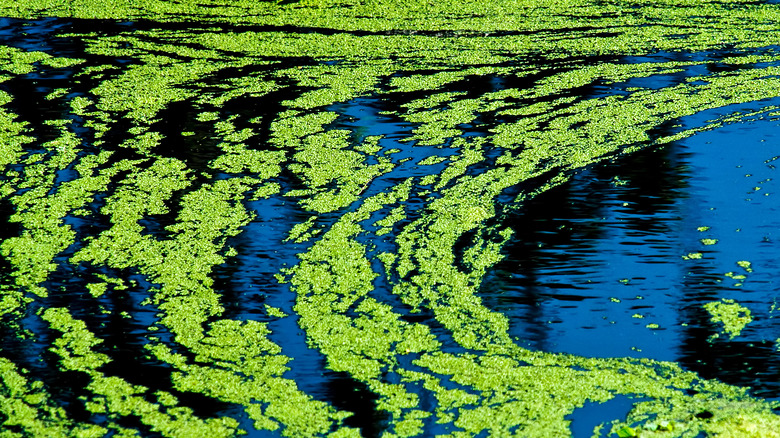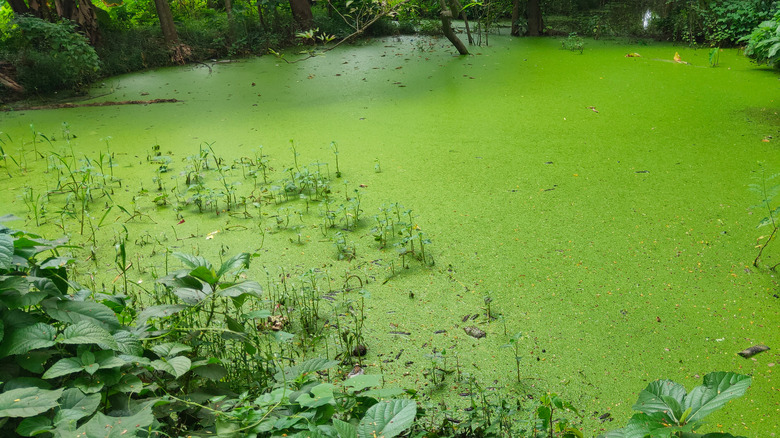Is The Blue-Green Algae Harmful To Your Health?
Summertime is here, and as the temperatures rise, so does the likelihood of finding blue-green algae in your favorite swimming hole. While these blooms don't make the water look inviting, not all blue-green algae produces harmful toxins.
So what exactly is blue-green algae? Cyanobacteria are microscopic organisms that live in both fresh and saltwater. When they multiply, they create a bloom in stagnant, warm water that is nutrient-rich in phosphorus and nitrogen (via Centers for Disease Control and Prevention). The resulting blooms can be stinky, and add a layer of scum on top of the water.
Once the blue-green algae reaches higher concentrations or the scum layer becomes large enough, it produces toxins like microcystin, nodularin, cylindrospermopsin, anatoxin-a, anatoin-a(s), lyngbyatoxin, and saxitoxins, according to the CDC. These toxins can be harmful if ingested, but also if inhaled. Some people may also experience skin irritation like dermatitis or blisters around your mouth.
Symptoms of blue-green algae ingestion are diarrhea, mild liver enzyme elevations, nausea, and vomiting three to five hours after exposure. These symptoms can last up to two days, and can also be coupled with other effects like headache, conjunctivitis (pinkeye), earache, muscle weakness, rhinitis, sore throat, and swollen lips. Symptoms of algae inhalation are similar, but respiratory problems can worsen to pneumonia or bronchospasm.
Warning signs of blue-green algae symptoms
You may be wondering why officials don't close affected waters immediately. Algae blooms can disappear as quickly as they form, and it takes some time to test the water for toxins, according to the Wisconsin Department of Health Services. This is why health officials say it is imperative for people to practice a "common-sense approach."
It's not just humans that need to worry about blue-green algae. Your pets are particularly susceptible, as it can be hard to keep them out of the affected body of water in the first place, or to prevent them from swallowing the water. Since they are smaller than the average human, it also doesn't take as much exposure or ingestion to make pets sick (via Wisconsin Department of Health Services). You should bring your pet to a veterinarian if you notice any symptoms like vomiting or foaming at the mouth after swimming.
Even though not all blue-green algae is toxic, it is better to be safe than sorry when it comes to cooling off this summer. Avoid swimming in water that is discolored, odorous, or has foam/scum on the surface. You should also report any suspected blue-green algae blooms to your local health department.


